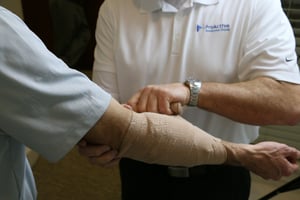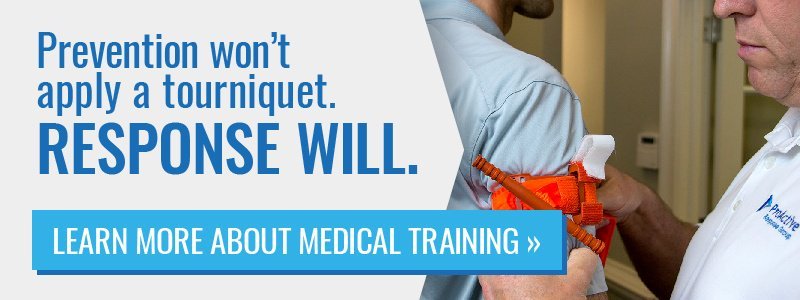 Most people have taken some form of first aid class at some point in their lives. Additionally, many people take first aid courses regularly because their jobs require it, or simply because they want to keep their certification up to date.
Most people have taken some form of first aid class at some point in their lives. Additionally, many people take first aid courses regularly because their jobs require it, or simply because they want to keep their certification up to date.
First aid training is an important skill to have. It prepares you to take action in a variety of situations. If someone is choking on a piece of food, First Aid training prepares you to do the Heimlich maneuver. Or, if a person has a heart attack and stops breathing, you would utilize your First Aid training by doing CPR.
However, there are a different set of emergency circumstances that could require different training.
What is emergency casualty care?
Emergency casualty care is a form of Emergency Medical Training that focuses on responding to life-threatening injuries such as severe bleeding. It teaches bleeding control in addition to other lifesaving skills such as the best techniques for dragging or carrying an injured person to safety.
Other more advanced skills often taught in casualty care classes include things like surgical airway control or needle decompression. Casualty care training is standard for EMS professionals, military personnel, law enforcement, and other first responders.
Do civilians need to be trained in emergency casualty care?
At any point, you—or any civilian—could find themselves in a position where they are a first responder. Someone could walk into your grocery store or workplace and fire a gun. Or, you could run across a serious car accident on your way home from work. Or, a coworker could injure themselves while operating heavy machinery. These kinds of real-life scenarios are all too possible.
Should you ever find yourself being the first person on the scene able to offer help, it doesn't matter if you're wearing the uniform of a soldier or police officer. All that matters is that you're ready and willing to respond. Every civilian should be equipped with the training to do that.
Which is more important? First aid training or emergency casualty care?
This is a trick question. To prioritize first aid training over emergency casualty care (or vice versa) would be like saying it's more important to put gas in your car than it is to buy groceries. Both are necessary, but they are useful in different scenarios.
A better question to ask is: What's the difference between first aid training and emergency casualty care? For that, we have better answers:
First Aid Training |
Emergency Casualty Care |
| It's a skills training course, focusing on things like the Heimlich maneuver and CPR. | It trains you to use specific types of equipment such as tourniquets and chest seals. |
| It's process-driven, teaching you to perform specific tasks in a specific order at a specific pace. | It trains you to adapt to unpredictable scenarios and use creative problem solving skills to survive dangerous situations. Sometimes that might mean using whatever you have on hand to create a makeshift medical device such as a tourniquet. |
| It addresses the dangers of bloodborne pathogens and other sanitary concerns when treating injuries. | It focuses on bleeding control, emphasizing the importance of acting quickly. |
| It teaches CPR for when a victim stops breathing. | It teaches the application of chest seals to keep air from entering the body through a wound. |
| It explains how to properly move an injured victim into the recovery position. | It teaches situational awareness so that you can determine whether you should treat an injured victim where they are or move them to a safe location first. |
| When you finish training, you take your skills and First Aid Certification with you. | When you leave training, you take your skills and an empowered mindset with you. We also encourage you to purchase a Bleeding Control Kit and keep it nearby. |
Contact Us About Emergency Medical Training
A right response calls for the right training. At ProActive Response Group, our experienced instructors provide that. Give us a call at (888) 512-3530, or send us a message online to ask us about Emergency Medical Training for yourself or your team.
.png?width=499&height=133&name=Logo-menu%20(1).png)



